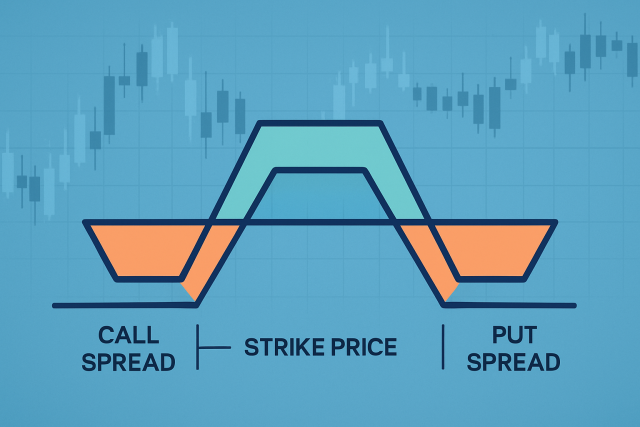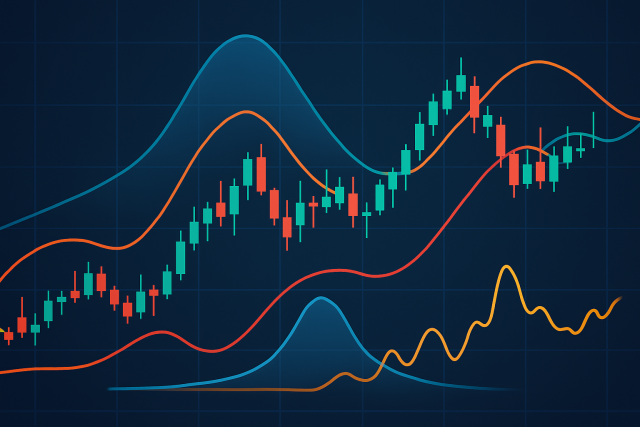
Iron Condor Option Trading Strategy Explained
Discover the iron condor option trading strategy—a flexible approach for steady income and controlle...

If you're just dipping your toes into leaps options trading, you've probably come across LEAPS and wondered how they stack up against the usual options. LEAPS stands for Long-term Equity Anticipation Securities and are options contracts with expiration dates that stretch much farther than the norm. This longer timeframe often makes LEAPS a great pick for beginners who want to test the waters without getting caught up in the fast-paced high-risk whirlwind of short-term contracts.
LEAPS, short for Long-term Equity Anticipation Securities, are options contracts that last much longer than typical options. While usual options expire within a few weeks or months, LEAPS take the scenic route with expiration dates from nine months up to three years.
Regular options trading typically involves contracts that expire anywhere from a few weeks up to several months, making them the go-to choice for short-term trading strategies.
The key differences between LEAPS and regular options boil down to how long they last, how you handle risk and how fast time decay sneaks up on them. LEAPS give you a much longer runway for your investment idea to play out and usually take the edge off those nail-biting time-sensitive risks.
| Attribute | LEAPS Options | Regular Options |
|---|---|---|
| Expiration | Generally stretches from about 9 months up to 3 years, giving you plenty of runway | Typically only lasts from a few days to several months, so it’s a quicker dance |
| Premium Cost | Comes with a higher upfront price tag thanks to all that extra time value packed in | Cheaper upfront but tends to fade in value faster than you might like |
| Sensitivity to Volatility | Moderately affected, since volatility’s grip loosens over the long haul | Quite sensitive, leading to speedy price swings that keep traders on their toes |
| Time Decay (Theta) | Creeps along slowly, value drops off gently over time | Moves much faster, especially when expiration looms close |
| Typical Strategies | Favored for long-term bullish or bearish bets and hedging—think of it as the slow and steady approach | Mostly for short-term plays, income from spreads, and hedging—quick and nimble |
| Risk Profile | Lower risk in the immediate term but you’ll need a fair bit of patience for the payoff | Carries higher risk due to those rapid price jolts that can make the ride a wild one |
One key difference lies in how the expiration timeline impacts option value. LEAPS come with longer expiration dates so the option holds its value longer and time decay creeps in more slowly. This setup gives traders breathing room to watch their market predictions unfold. Meanwhile, regular options tend to lose value faster as expiration looms.
LEAPS come with longer timeframes and the risks tend to spread out more evenly which can help soften the blow of sudden market swings. You usually pony up a higher premium right from the start meaning the initial amount at risk is often bigger.
When it comes to cost and capital needs, there is often more than meets the eye. It is not just about the numbers on a spreadsheet; it is about understanding the real investment required to keep things humming smoothly. I have found that breaking down these costs thoughtfully can save a lot of headaches down the road. So, let us take a closer look at what you actually need to cover, from upfront expenses to the ongoing capital that keeps the wheels turning.
LEAPS usually call for a heftier upfront investment since their premiums tend to run higher thanks to the longer time frame.
For those just dipping their toes into options, LEAPS can be a handy tool to ease into the world of longer-term trades. Basic strategies often lean on LEAPS instead of buying stocks outright or use them as a safety net, aiming for long-term bullish or bearish positions without sweating the clock on near-term expiration.
One of the most comforting things for beginners is that LEAPS give you a much longer runway for your market prediction to unfold, compared to regular options. This generous stretch of time really helps calm those nerves about sudden price jolts and encourages a more patient, thoughtful approach.
LEAPS options trading comes with some clear benefits but it's important to watch the risks involved. These include the premium slipping away as time passes and swings in implied volatility that can shake up option prices. There is also everyday market risk if the underlying asset decides to take you for a spin.
Struggling to improve your trading performance? Edgewonk's advanced analytics tools are designed to give you the edge you need.
With detailed trade journaling, robust strategy analysis, and psychological insights, you'll gain a comprehensive understanding of your strengths and weaknesses. Don't miss out on this game-changing opportunity.
Traders, it's time to elevate your game. Edgewonk is the ultimate trading journal software designed to empower you with data-driven insights and personalized strategies. Take control of your trading journey and maximize your potential.
23 posts written
Driven by a passion for uncovering the hidden patterns that underlie market dynamics, Isla Wyndham brings a unique perspective to the realm of trading, blending quantitative analysis with a keen intuition for human behavior.
Read Articles
Discover the iron condor option trading strategy—a flexible approach for steady income and controlle...

Volatility is key to understanding options trading. Discover how it affects prices, strategies, and...

Discover the key differences between options trading and day trading. This in-depth analysis helps t...

Explore the detailed contrasts between day trading and options trading, highlighting how each strate...
